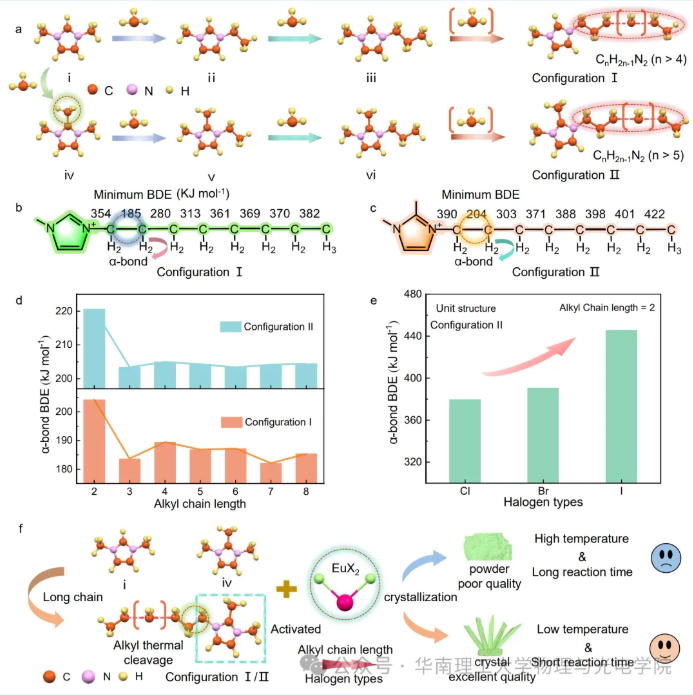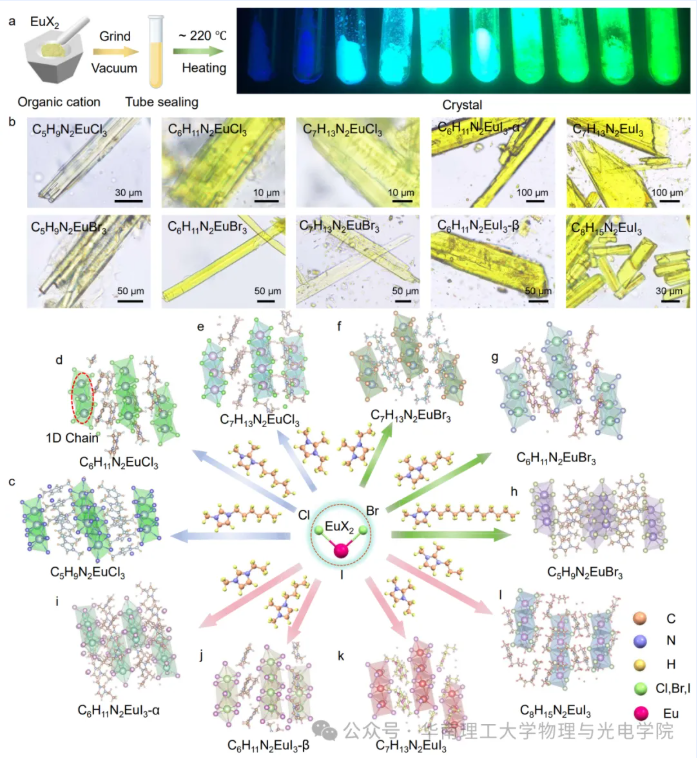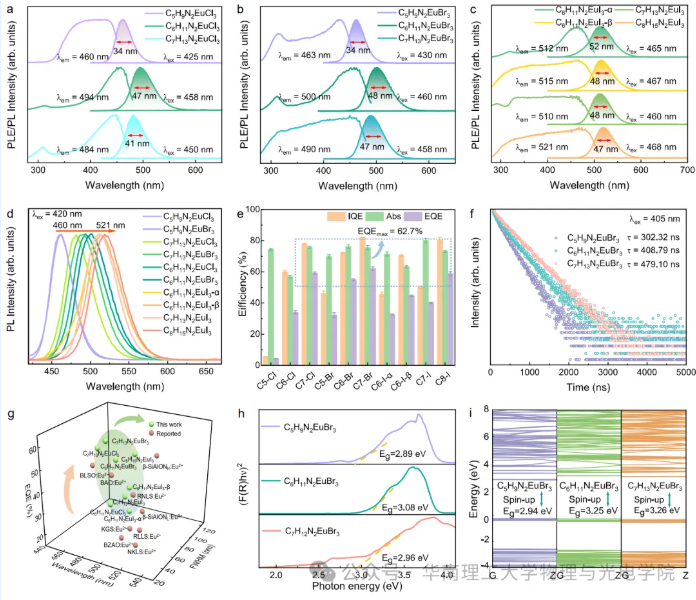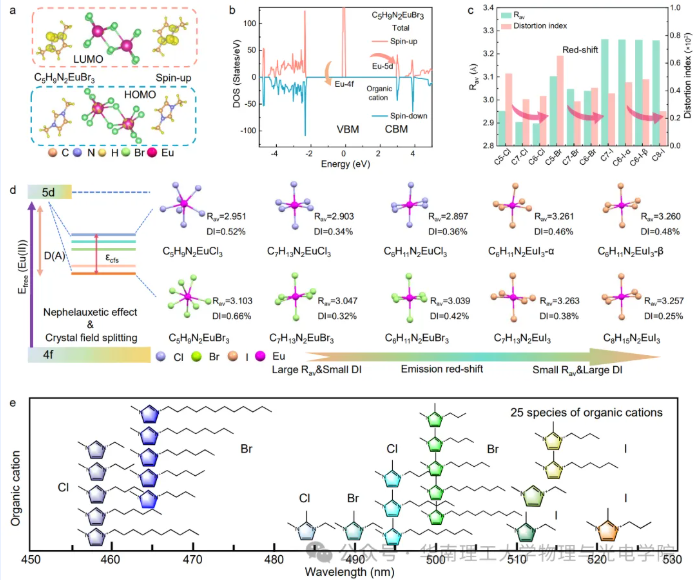Research Background
Organic inorganic hybrid metal halides have become a new generation of luminescent materials in the field of multifunctional photonics applications. In recent years, a new type of rare earth Eu (II) - based hybrid halide luminescent material based on 5d-4f transition has attracted the attention of researchers, especially its advantages such as spectral tunability, high luminescence efficiency, and narrow emission half peak width, which have potential applications in new displays, scintillators, and other fields. However, the structural design and synthesis strategy of hybrid luminescent halides are still limited by limited component engineering and poor phase crystallization quality, which cannot meet the corresponding photonics applications.
Research Highlights
Recently, Professor Xia Zhiguo's research group from the School of Physics and Optoelectronics/National Key Laboratory of Luminescent Materials and Devices at South China University of Technology proposed an alkyl thermal decomposition synthesis strategy suitable for hybrid metal halides. By using 25 organic compounds with different alkyl chain lengths, a series of efficient narrow-band emission (half peak width of 34-52 nm) Eu (II) - based hybrid halide crystals were prepared. Based on the configuration, coordination radius, and distortion degree of europium halide polyhedra, the crystal designed and synthesized in this study achieved adjustable emission in the blue-green light range. Therefore, this study provides new ideas for the component design and high-quality crystal growth of hybrid luminescent halides.
Organic inorganic hybrid luminescent halides have shown significant application prospects in fields such as lighting, display, sensing, and scintillation. Solid phase sintering is one of the traditional methods for growing hybrid halide single crystals, which does not require organic solvents and is easy to prepare on a large scale. However, the high melting point of short alkyl chain organic cations themselves results in higher reaction temperatures and longer reaction times required for solid-state sintering processes, and they are prone to producing poor quality powdered crystals. To overcome the technical bottleneck mentioned above, this study takes a different approach by using long-chain organic cations with low melting points to replace short chain cations, thereby achieving high-quality single crystal growth.

Figure 1 Design mechanism and advantages of alkyl thermal cracking synthesis strategy

Figure 2 Synthesis route and typical luminescent materials of Eu (II) - based hybrid halide single crystals
As the length of the alkyl chain increases, the dissociation energy of carbon carbon bonds adjacent to the five membered ring in organic cations significantly decreases. Therefore, at lower reaction temperatures, the carbon carbon bond can be broken, achieving alkyl thermal cracking. After cracking, short chain organic cationic free radical intermediates with high reactivity were generated. Subsequently, the intermediate is combined with metal halide raw materials to rapidly crystallize high-quality single crystals. This process was validated on 25 organic compounds through theoretical calculations and single crystal X-ray diffraction data. The alkyl thermal cracking synthesis strategy not only continues the characteristic of solid-phase reaction without the need for organic solvents, but also has the advantages of low reaction temperature, short growth time, and high crystal quality.

Figure 3: photoluminescence properties of Eu (II) - based hybrid halide single crystals
The synthesized crystal has advantages such as narrowband emission and high luminous efficiency, with a maximum external quantum efficiency of 62.6%. In addition, the study elucidated that its adjustable emission characteristics stem from the synergistic effect of octahedral configuration, coordination radius, and distortion degree in halides.

Figure 4 Mechanism of tunable emission of Eu (II) - based hybrid halides
Introduction and thanks to the research group (author):
The relevant research results were published in Nature Communications under the title Rational design and synthesis of narrow band emitting Eu (II) - based hybrid halides via alkyl thermal cleaning, with Professor Xia Zhiguo as the corresponding author and Dr. Li Liang from the School of Physics and Optoelectronics, South China University of Technology as the first author.
This research work was supported by the National Natural Science Foundation of China (52425206 and 22361132525) and the China Postdoctoral Science Foundation (2024M760954).
Original link:
https://doi.org/10.1038/s41467-025-62748-0



